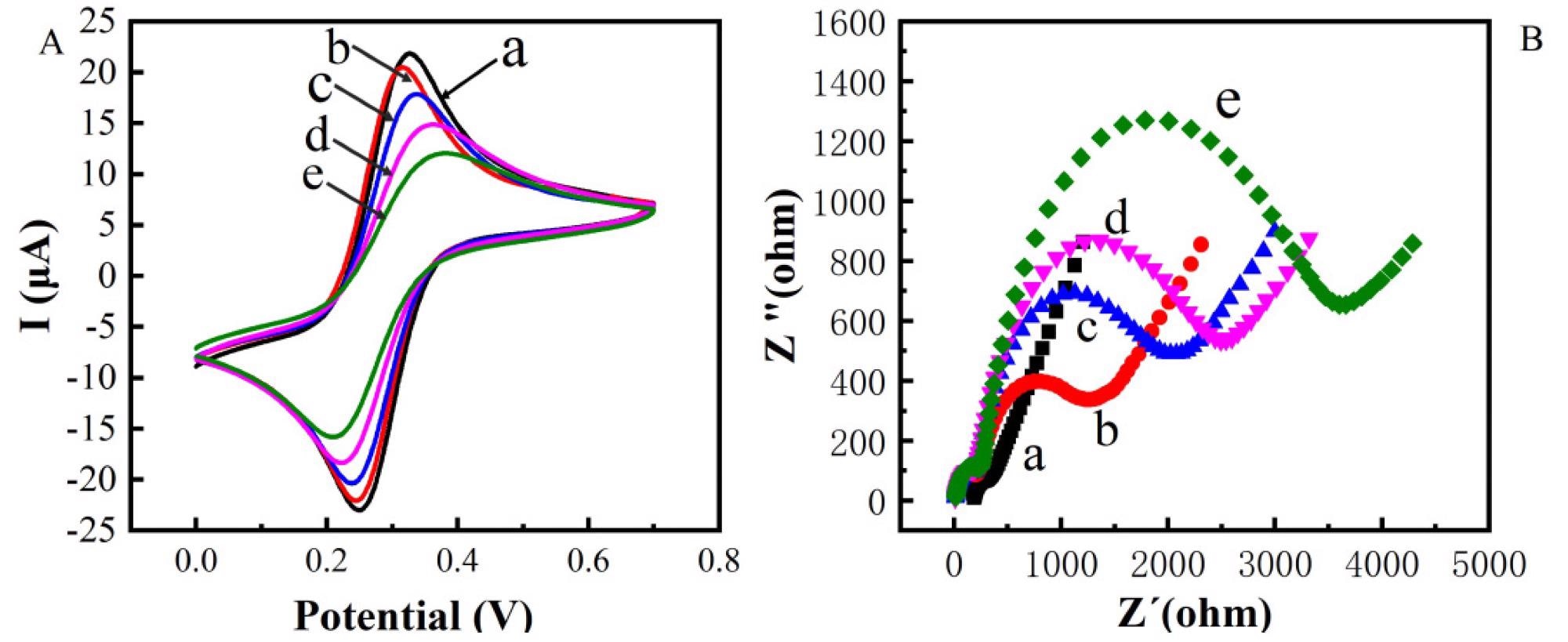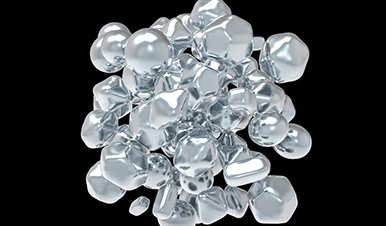In a research study published recently in the journal Agriculture, an electrolytic sensor based on the concentration of floral nano-ZnO and the identification of immune reaction was created for the high-sensitivity monitoring of Tenuazonic acid (TeA) in fruit and vegetables.
When comparing various morphologies, dimensions, and crystalline structures of nano-ZnO, the researchers discovered that floral nano-ZnO (ZnO NFs) with a hexagonal phase had the best surface area and conductance.
What is Tenuazonic Acid (TeA)?
When compared to other Alternaria chemicals, tenuazonic acid (TeA) exhibits a high level of toxic effects, including neurotoxicity and probable carcinogenic effects.
It may also cause cumulative harm when combined with other toxins, leading to acute poisoning.
TeA can be found in a variety of foods, including grains, peppercorns, vegetables, fruits, and even animal proteins, with levels of contamination varying from a few milligrams to thousands of milligrams.
TeA was included by the United States National Council for Occupational Health & Safety in 1979 due to its high contamination of farm products.

Figure 1. The SEM image of flower-shaped nano-ZnO (A) and brush-shaped nano-ZnO (B); XRD patterns of ZnO (C); FT-IR spectrum of amino-modified nano-ZnO (D). © Zhang, C. et al. (2022)
To date, enzyme-linked immunoassay (ELISA) and column chromatography spectroscopy have been the primary methods for detecting the carcinogen TeA.
However, since these traditional detection systems have significant drawbacks, such as being inconvenient, time-consuming, and having low susceptibility, enhancements in sensing methods of TeA are still needed.
Importance of ZnO Based Electrochemical Biosensors
In comparison to the approaches mentioned above, the electrochemical biosensor has been commonly regarded as a potent assessment technique with several advantages, including quick detection rate and mobile devices.
Recent research has focused on increasing its high specificity using a nanocomposite with a large surface area, great conductance, and superior photocatalytic characteristics.
Zinc oxide (ZnO) is a global semiconductor that may function as both a nanocomposite and a transistor. Because of its huge surface area, excellent durability, and superior cytocompatibility, it can offer much more redox potential for biorecognition components such as nucleic acid aptamers and monoclonal antibodies.
Since numerous microstructures of ZnO have been effectively implemented to biosensors to identify different bioactive molecules, it is essential to measure the impact of varying morphological features of ZnO on surface area and permeability to widen its implementation in delicate biosensors.

Figure 2. Cyclic voltametric characterization of constructing electrochemical immunosensor (A) Electrochemical impedance spectroscopy characterization of constructing electrochemical immunosensor (B) (a: bare Au; b: bare Au/ZnO; c: bare Au/ZnO/antibody; d: bare Au/ZnO/antibody/BSA; e: bare Au/ZnO/antibody/BSA/TeA). © Zhang, C. et al. (2022)
ZnO NFs as Biosensors for Detection of TeA
In this study, by carefully adjusting pH, response duration, activation time, and precipitator, ZnO with various morphologies, dimensions, and crystallinity was manufactured.
Because of the hard surface, three-dimensional structure, and numerous gaps on each nucleotide surface, the floral nanoscale ZnO has the highest load-bearing capacity.
Through an amidation process between the amino group of antigens and the carboxylate, the ZnO NFs were covalently bonded with TeA specific antibodies and subsequently anchored on a gold working electrode altered with 2-mercaptobenzoic acid (MBA).
Construction of Electrochemical TeA Sensor
A traditional three-electrode cell arrangement was used in which a gold wire acted as the electrode material, an Ag/AgCl electrode functioned as the reference electrode, and a Pt cable worked as the counter electrode.
The gold electrode was first soaked in a 1 percent MBA absolute ethanol, then maintained at 37 °C for 2 hours before being washed with distilled water and air-dried.
CV imaging and electrical resistance spectrometry were performed after each of the layers above had been modified.
The electrochemical behavior was investigated using a differentiated pulse voltammetry (DPV) test with a phase voltage of 4 mV, a frequency of 25 Hz, and an intensity of 25 mV.
Research Conclusion and Prospects
In conclusion, to overcome the high-loading issue of specific antibodies, the researchers created altered ZnO and floral nano-ZnO.
The effective production of Au/ZnO/antibody/BSA/TeA was validated by CV and EIS studies. Moreover, the electrolytic biosensor has good specificity and low resistance.
Sensitivity experiments revealed that it has a unique anti-interference capability against pollutants with a composition comparable to TeA.
TeA was effectively determined with a low detection limit using a straightforward, cost-effective, and pollution-free nano-ZnO, paving the way for the development of more economical and accurate biosensors for the identification of additional substances.

Figure 3. Selectivity of the biosensor detection of TeA (500 pg/mL) against the interference proteins: 50 ng/mL ALT, 50 ng/mL AME, 50 ng/mL TEN, and 50 ng/mL AOH. © Zhang, C. et al. (2022)
News
Repurposed drugs could calm the immune system’s response to nanomedicine
An international study led by researchers at the University of Colorado Anschutz Medical Campus has identified a promising strategy to enhance the safety of nanomedicines, advanced therapies often used in cancer and vaccine treatments, [...]
Nano-Enhanced Hydrogel Strategies for Cartilage Repair
A recent article in Engineering describes the development of a protein-based nanocomposite hydrogel designed to deliver two therapeutic agents—dexamethasone (Dex) and kartogenin (KGN)—to support cartilage repair. The hydrogel is engineered to modulate immune responses and promote [...]
New Cancer Drug Blocks Tumors Without Debilitating Side Effects
A new drug targets RAS-PI3Kα pathways without harmful side effects. It was developed using high-performance computing and AI. A new cancer drug candidate, developed through a collaboration between Lawrence Livermore National Laboratory (LLNL), BridgeBio Oncology [...]
Scientists Are Pretty Close to Replicating the First Thing That Ever Lived
For 400 million years, a leading hypothesis claims, Earth was an “RNA World,” meaning that life must’ve first replicated from RNA before the arrival of proteins and DNA. Unfortunately, scientists have failed to find [...]
Why ‘Peniaphobia’ Is Exploding Among Young People (And Why We Should Be Concerned)
An insidious illness is taking hold among a growing proportion of young people. Little known to the general public, peniaphobia—the fear of becoming poor—is gaining ground among teens and young adults. Discover the causes [...]
Team finds flawed data in recent study relevant to coronavirus antiviral development
The COVID pandemic illustrated how urgently we need antiviral medications capable of treating coronavirus infections. To aid this effort, researchers quickly homed in on part of SARS-CoV-2's molecular structure known as the NiRAN domain—an [...]
Drug-Coated Neural Implants Reduce Immune Rejection
Summary: A new study shows that coating neural prosthetic implants with the anti-inflammatory drug dexamethasone helps reduce the body’s immune response and scar tissue formation. This strategy enhances the long-term performance and stability of electrodes [...]
Scientists discover cancer-fighting bacteria that ‘soak up’ forever chemicals in the body
A family of healthy bacteria may help 'soak up' toxic forever chemicals in the body, warding off their cancerous effects. Forever chemicals, also known as PFAS (per- and polyfluoroalkyl substances), are toxic chemicals that [...]
Johns Hopkins Researchers Uncover a New Way To Kill Cancer Cells
A new study reveals that blocking ribosomal RNA production rewires cancer cell behavior and could help treat genetically unstable tumors. Researchers at the Johns Hopkins Kimmel Cancer Center and the Department of Radiation Oncology and Molecular [...]
AI matches doctors in mapping lung tumors for radiation therapy
In radiation therapy, precision can save lives. Oncologists must carefully map the size and location of a tumor before delivering high-dose radiation to destroy cancer cells while sparing healthy tissue. But this process, called [...]
Scientists Finally “See” Key Protein That Controls Inflammation
Researchers used advanced microscopy to uncover important protein structures. For the first time, two important protein structures in the human body are being visualized, thanks in part to cutting-edge technology at the University of [...]
AI tool detects 9 types of dementia from a single brain scan
Mayo Clinic researchers have developed a new artificial intelligence (AI) tool that helps clinicians identify brain activity patterns linked to nine types of dementia, including Alzheimer's disease, using a single, widely available scan—a transformative [...]
Is plastic packaging putting more than just food on your plate?
New research reveals that common food packaging and utensils can shed microscopic plastics into our food, prompting urgent calls for stricter testing and updated regulations to protect public health. Beyond microplastics: The analysis intentionally [...]
Aging Spreads Through the Bloodstream
Summary: New research reveals that aging isn’t just a local cellular process—it can spread throughout the body via the bloodstream. A redox-sensitive protein called ReHMGB1, secreted by senescent cells, was found to trigger aging features [...]
AI and nanomedicine find rare biomarkers for prostrate cancer and atherosclerosis
Imagine a stadium packed with 75,000 fans, all wearing green and white jerseys—except one person in a solid green shirt. Finding that person would be tough. That's how hard it is for scientists to [...]
Are Pesticides Breeding the Next Pandemic? Experts Warn of Fungal Superbugs
Fungicides used in agriculture have been linked to an increase in resistance to antifungal drugs in both humans and animals. Fungal infections are on the rise, and two UC Davis infectious disease experts, Dr. George Thompson [...]





















